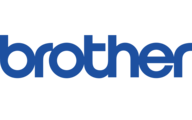Olivetti d-COPIA 1601 Bedienungsanleitung
Lesen Sie kostenlos die 📖 deutsche Bedienungsanleitung für Olivetti d-COPIA 1601 (164 Seiten) in der Kategorie Kopien. Dieser Bedienungsanleitung war für 35 Personen hilfreich und wurde von 2 Benutzern mit durchschnittlich 4.5 Sternen bewertet
Seite 1/164

Code 539506EN
Printed in Italy GB
OPERATOR MANUAL


PUBLICATION ISSUED BY:
Olivetti S.p.A.
Gruppo Telecom Italia
Via Jervis, 77 - 10015 Ivrea (ITALY)
www.olivetti.com
Copyright © 200 , Olivetti7
All rights reserved
The manufacturer reserves the right to carry out modifications to the product described in this manual at any time
and without any notice.
The ENERGY STAR program is an energy reduction plan introduced by the United States Environmental Protection
Agency in response to environmental issues and for the purpose of advancing the development and utilization of
more energy efficient office equipment.
ENERGY STAR is a U.S. registered mark.
The mark affixed to the product certifies that
the product satisfies the basic quality
requirements.
Your attention is drawn to the following actions which could compromise the conformity attested to above, as well
as the characteristics of the product:
• incorrect electrical power supply;
• incorrect installation, incorrect or improper use or use not in compliance with the warnings provided in the
User’s Manual supplied with the product;
• replacement of original components or accessories with others of a type not approved by the manufacturer, or
performed by unauthorised personnel.
All rights reserved. No part of this material may be reproduced or transmitted in any
fo m or y any mean , electronic or mechanical, including photoco ying, recording orr b s p
by any information storage and retrieval system, without permission in writing from
the Publisher.
Produktspezifikationen
| Marke: | Olivetti |
| Kategorie: | Kopien |
| Modell: | d-COPIA 1601 |
| Gewicht: | 31300 g |
| Betriebstemperatur: | 10 - 30 °C |
| Relative Luftfeuchtigkeit in Betrieb: | 20 - 85 % |
| Stromverbrauch (Standardbetrieb): | 150 W |
| Farbe: | Nein |
| Typ: | Digitaler Kopierer |
| Mac-Kompatibilität: | Nein |
| Energiebedarf: | 220-240 VAC, 50-60 Hz |
| Vergrößerung: | Fixed:50%, 70%, 81%, 86%, 100%, 115%, 122%, 141%, 200% x |
| Zoom-Fähigkeit: | 25% - 400% |
| Kompatible Betriebssysteme: | Windows 95/98/ME/NT4.0/2000/XP |
| Abmessungen (BxTxH): | 590 x 577 x 470 mm |
| Speicherkapazität: | 16 MB |
| RAM-Speicher maximal: | 256 MB |
| Aufwärmzeit: | 45 s |
| Graustufen: | 256 |
| Standard-Schnittstellen: | USB 1.1 |
| Druckgeschwindigkeit (Schwarz, normale Qualität, A4/US Letter): | 12 Seiten pro Minute |
| Drucktechnologie: | Laser |
| Unterstützte Medientypen: | A3, A4R, A4, B5, A5, B5R |
| Sensor-Typ: | CCD |
| Maximale Druckgröße: | A3 (297 x 420 mm) |
| Druck der ersten Seite (Schwarz, normal): | 7.2 s |
| Max. Ausgabekapazität: | 850 Blätter |
| Kapazität der Papiereingabe (Standard): | 350 Blätter |
| Empfohlenes Mediengewicht: | 59-90 g/m² |
| Zusätzliche Zufuhrfächer: | 1 x 250 sheets (PF 24) |
| Mediengewichte nach Papierlaufweg: | 26-200 g/m2 |
| Standardmedienformate: | 11" x 17", 8-1/2" x 14", 8-1/2" x 11"R, 8-1/2" x 11", 5-1/2" x 8-1/2" |
| Maximale Kapazität: | 1100 Blätter |
| Copy Auflösung (Schwarzer Text): | 600 x 600 DPI |
| Mehrfach-Kopie (max.): | 999 Kopien |
| Maximale Kopiergeschwindigkeit: | 16 Kopien pro Minute |
Brauchst du Hilfe?
Wenn Sie Hilfe mit Olivetti d-COPIA 1601 benötigen, stellen Sie unten eine Frage und andere Benutzer werden Ihnen antworten
Bedienungsanleitung Kopien Olivetti

15 September 2023
Bedienungsanleitung Kopien
Neueste Bedienungsanleitung für -Kategorien-

25 Januar 2024

20 Dezember 2023

13 Dezember 2023

27 November 2023

5 September 2023

14 August 2023

5 November 2022

4 November 2022